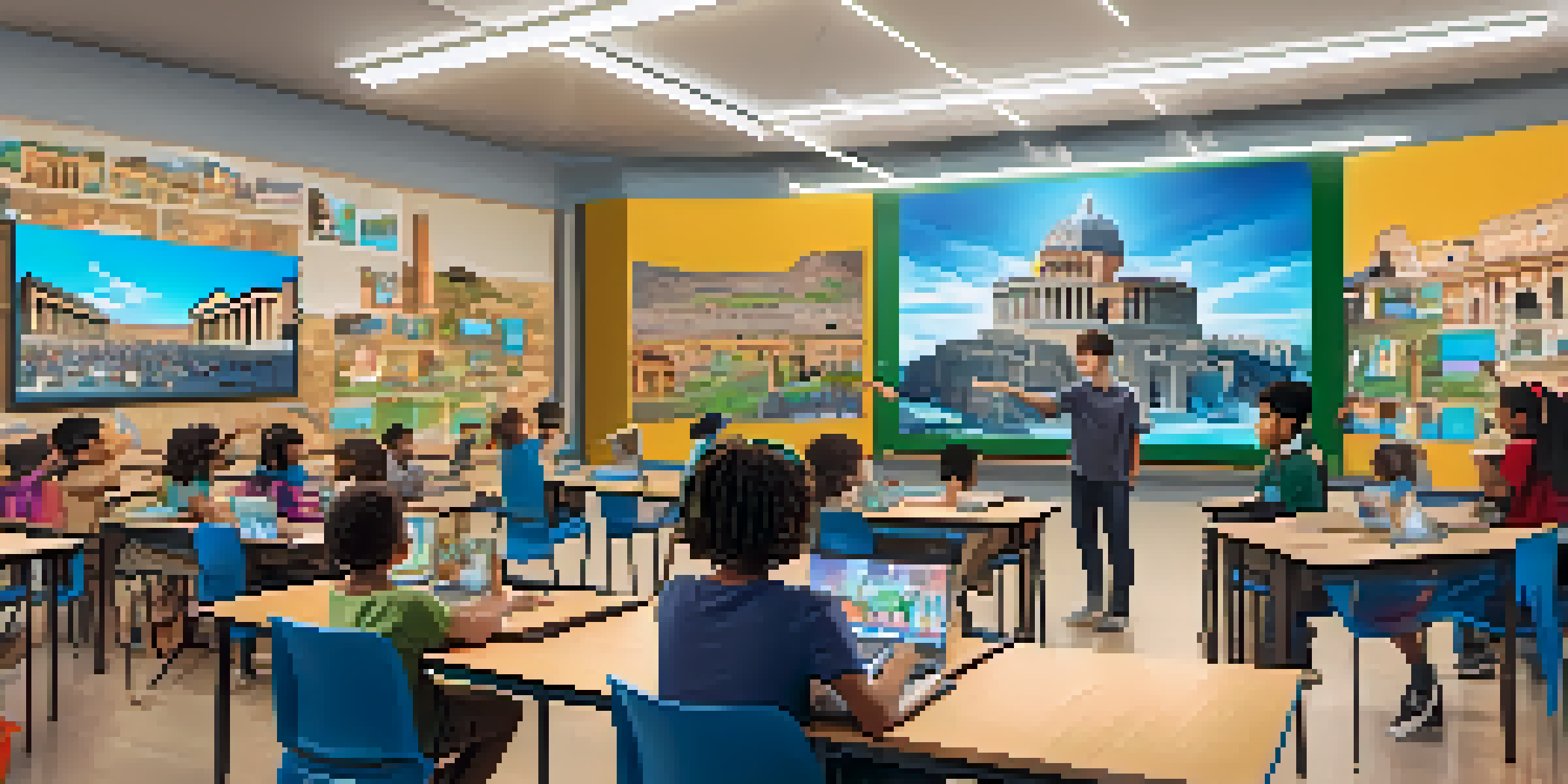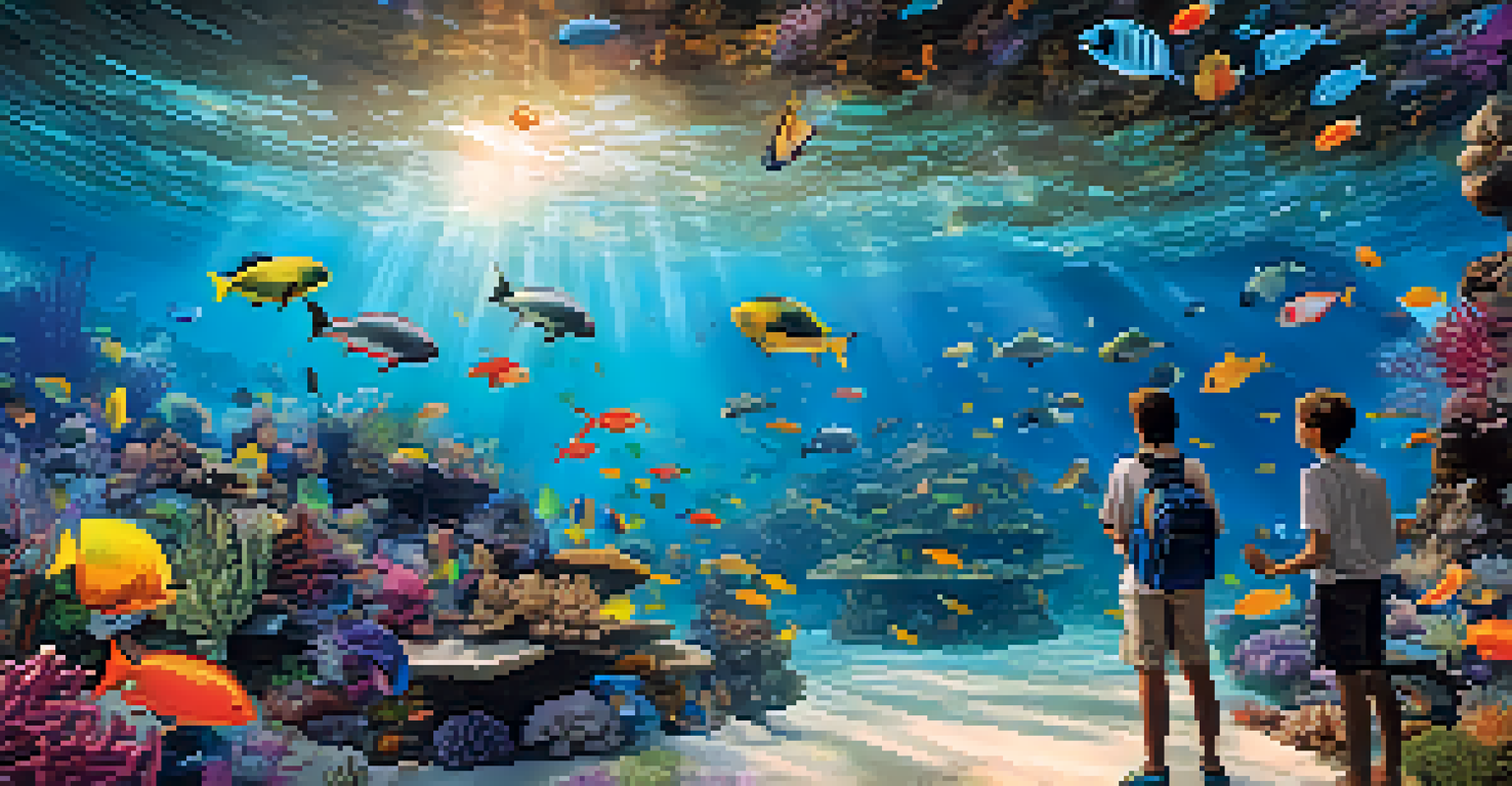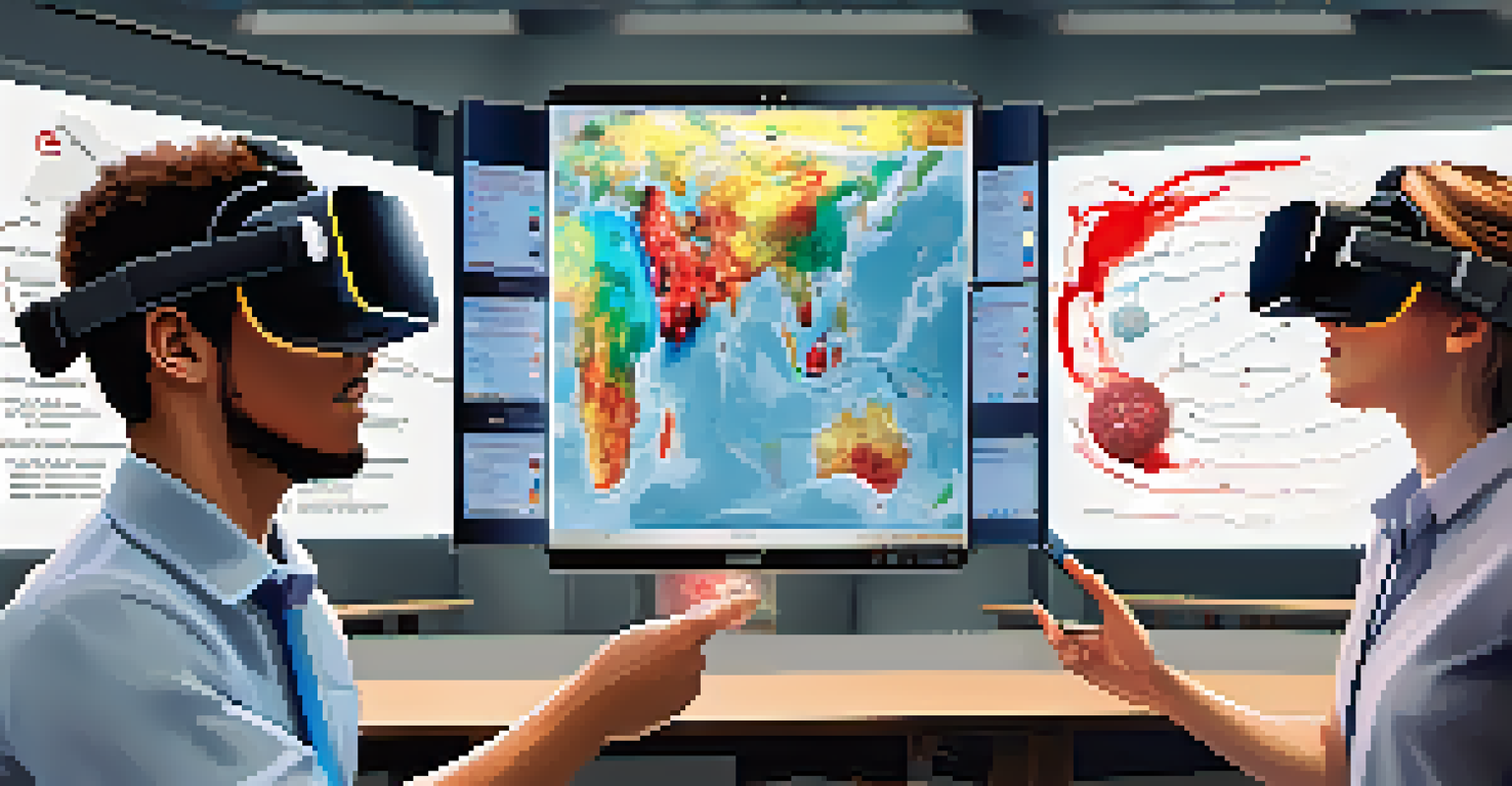Utilizing Virtual Reality in Transmedia Learning Experiences

Understanding Transmedia Learning: The Basics
Transmedia learning involves integrating multiple forms of media to enhance the educational experience. Think of it as telling a story across different platforms, where each piece adds depth and context. For example, a narrative might start in a book, move to a film, and then extend into an interactive video game, engaging learners in multiple ways.
The great use of life is to spend it for something that will outlast it.
This approach allows learners to interact with content on various levels, making the experience more immersive and memorable. By navigating through different media, students can explore concepts from multiple angles, enhancing their understanding and retention of information. It’s akin to piecing together a puzzle, where each medium contributes to the whole picture.
As technology evolves, transmedia learning continues to adapt, and one of the most promising advancements is the integration of Virtual Reality (VR). VR adds a layer of interactivity and engagement that can transform traditional educational methods, making learning more dynamic and engaging.
What is Virtual Reality and Why It Matters
Virtual Reality (VR) is a technology that creates a simulated environment, allowing users to experience and interact with a 3D space. This immersive experience can transport learners anywhere, from ancient civilizations to complex scientific phenomena, all from the comfort of their classroom. Imagine walking through the ruins of Pompeii or exploring the human bloodstream in real-time.

The significance of VR in education lies in its ability to create experiential learning opportunities that traditional methods often lack. By stepping into an immersive environment, learners can engage with the material on a deeper level, fostering curiosity and a desire to explore further. It’s like going on a field trip without the logistical challenges.
Transmedia Learning Enhances Education
Integrating various media formats enriches the learning experience by allowing students to engage with content in multiple ways.
Moreover, VR can cater to different learning styles, accommodating visual, auditory, and kinesthetic learners alike. This versatility makes VR a powerful tool in transmedia learning, enriching the overall educational experience and allowing educators to reach a wider range of students.
The Synergy of VR and Transmedia Learning
When combined, VR and transmedia learning create a rich tapestry of educational experiences that captivate learners. This synergy allows for storytelling that transcends boundaries, engaging students in ways that are both entertaining and educational. For instance, a history lesson could start with a VR experience, transporting students to a pivotal moment in time, followed by readings and videos that provide context.
Education is not the filling of a pail, but the lighting of a fire.
This multifaceted approach encourages learners to actively participate in their educational journey, making them more invested in the material. They can experience history, science, or art not just through textbooks, but by living it in a virtual space. It's like stepping into the shoes of historical figures, making the past feel alive and relevant.
Additionally, this combination fosters collaboration among learners, as they can share experiences and insights gained from different media. By discussing their VR experiences in conjunction with other forms of content, students can develop critical thinking and communication skills, essential for their future endeavors.
Creating Effective VR Experiences for Learning
To harness the full potential of VR in transmedia learning, educators must design experiences that are purposeful and engaging. This begins with clear learning objectives that guide the creation of VR content. For example, if the goal is to understand ecosystems, a VR simulation could allow students to explore different habitats and their interconnections.
Moreover, incorporating storytelling elements can enhance immersion and relatability. When learners feel emotionally connected to the content, they are more likely to retain information and develop a deeper understanding. Think of it as weaving a narrative that draws students into the experience, making learning feel less like a chore and more like an adventure.
VR Transforms Learning Experiences
Virtual Reality creates immersive environments that deepen understanding and engagement by allowing learners to interact with content firsthand.
Finally, feedback mechanisms are crucial. Allowing students to reflect on their VR experiences and share insights fosters a growth mindset, encouraging them to think critically about what they learned. This iterative process of reflection and discussion can transform VR from a one-time experience into an ongoing educational dialogue.
Challenges in Implementing VR in Education
While the benefits of VR in transmedia learning are significant, challenges remain in its implementation. One major hurdle is the accessibility of VR technology; not all schools have the resources to invest in high-quality VR equipment. This disparity can create a divide in educational opportunities, leaving some students at a disadvantage.
Additionally, the development of effective VR content requires expertise and time, which can be daunting for educators who may already be stretched thin. Crafting engaging and educational VR experiences isn’t just about technology; it requires creativity and a deep understanding of pedagogical principles. It’s like trying to build a new type of playground without enough tools or blueprints.
Lastly, there’s the potential for motion sickness or discomfort in some users, which can detract from the learning experience. Educators need to be aware of these issues and prepare to provide alternatives or modifications to ensure that all students can benefit from these immersive experiences.
Real-World Examples of VR in Transmedia Learning
Several innovative programs are utilizing VR to enhance transmedia learning. For instance, organizations like Google Expeditions allow students to embark on virtual field trips, exploring everything from the Great Barrier Reef to outer space. These experiences complement traditional lessons, providing a multi-dimensional view of the world.
Another example is the use of VR simulations in medical education, where students can practice surgical procedures in a risk-free environment. This hands-on approach not only builds confidence but also reinforces theoretical knowledge through practical application. It’s like having a safe space to learn how to ride a bike before hitting the road.
Collaboration Through Shared Experiences
Combining VR with transmedia learning fosters collaboration among students, enhancing critical thinking and communication skills.
Moreover, institutions like the University of Maryland have integrated VR into their curricula, allowing students to engage with historical events through immersive storytelling. By participating in these narratives, learners gain a richer understanding of the subject matter, illustrating the profound impact of VR in creating compelling educational experiences.
The Future of VR in Transmedia Learning
Looking ahead, the future of VR in transmedia learning is bright but dependent on continued innovation and investment. As technology advances, we can expect more accessible and affordable VR solutions, making it easier for educational institutions to adopt this transformative approach. Imagine a world where every student has access to immersive learning experiences that spark their imagination.
Furthermore, as content creators continue to experiment with VR, the potential for new storytelling methods will expand. This evolution could lead to even more engaging and interactive educational materials, catering to a variety of learning preferences. It’s like watching a new genre of films emerge, each one more captivating than the last.

Ultimately, the integration of VR into transmedia learning has the power to reshape education as we know it. By embracing this technology, educators can create dynamic, engaging, and meaningful learning experiences that prepare students for an increasingly complex world, igniting a passion for lifelong learning.